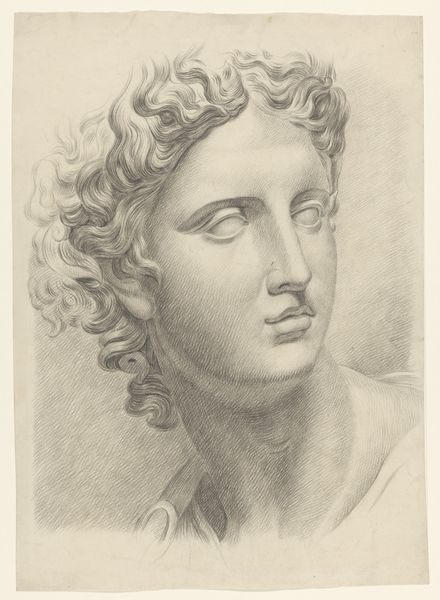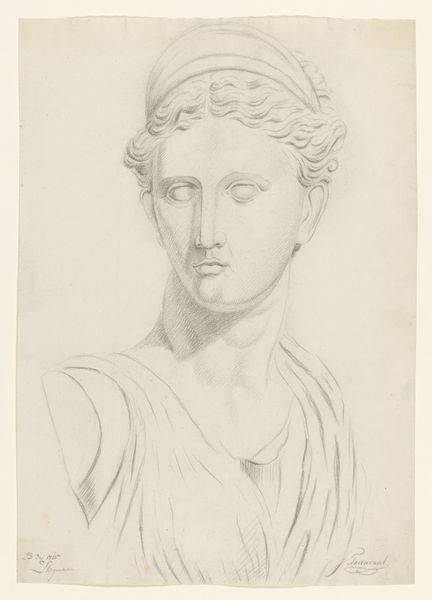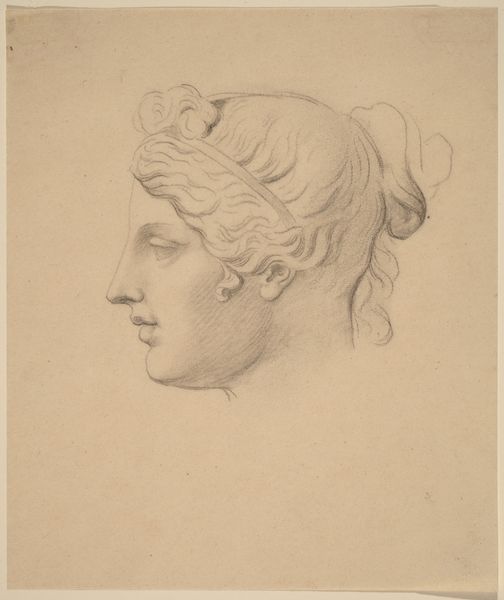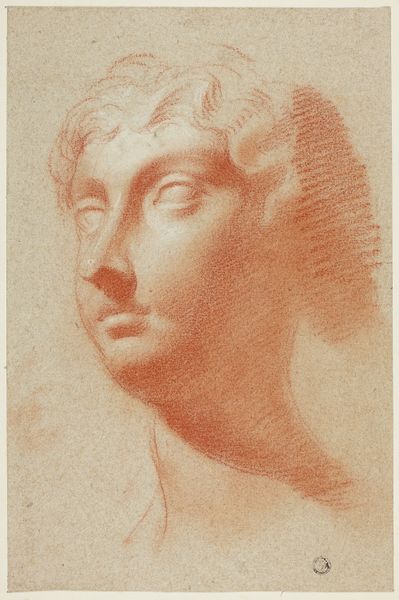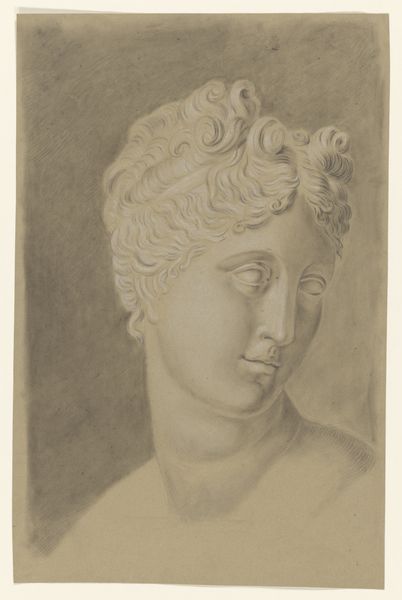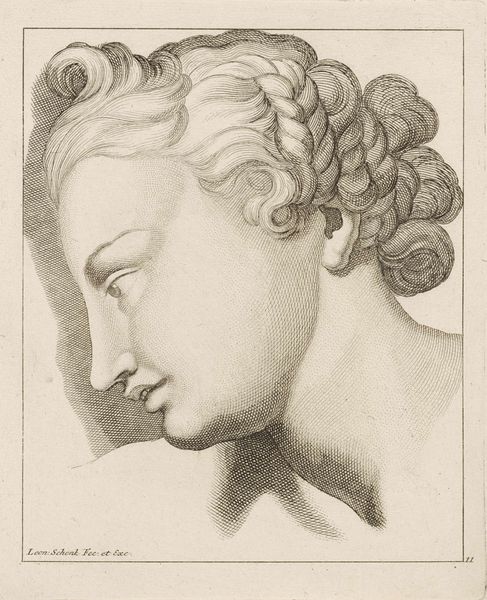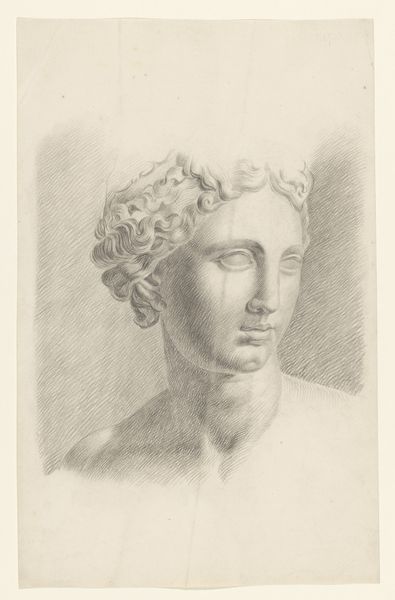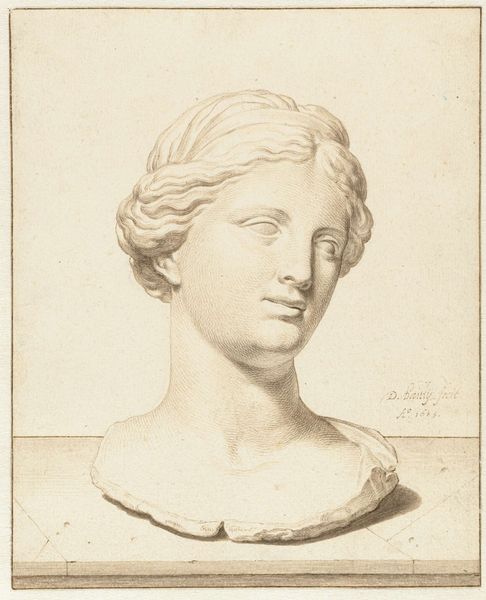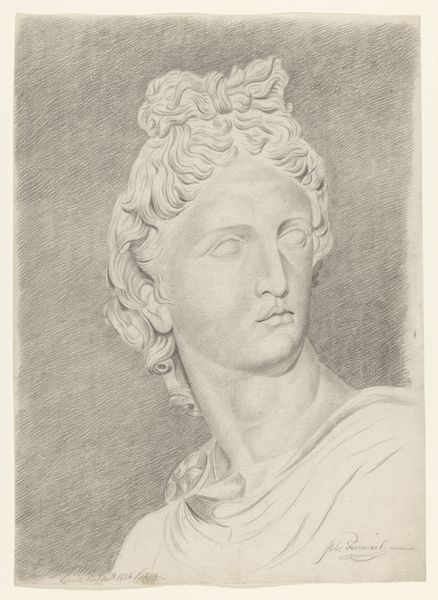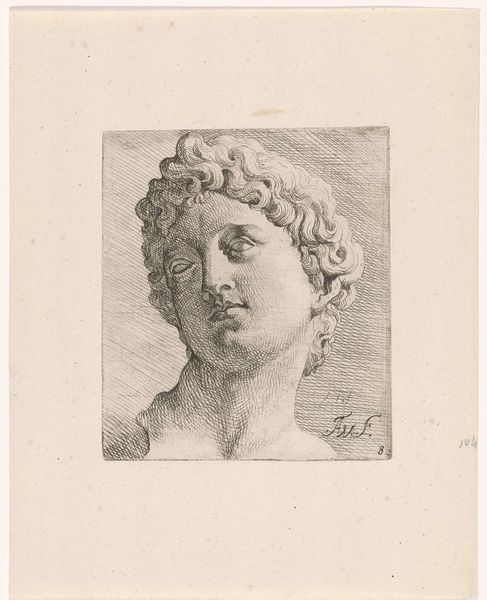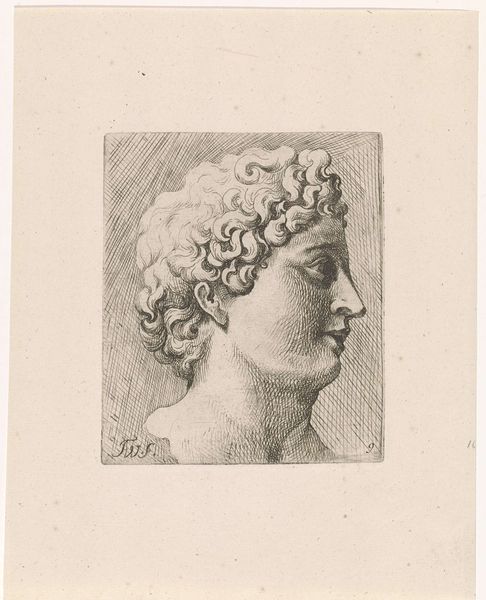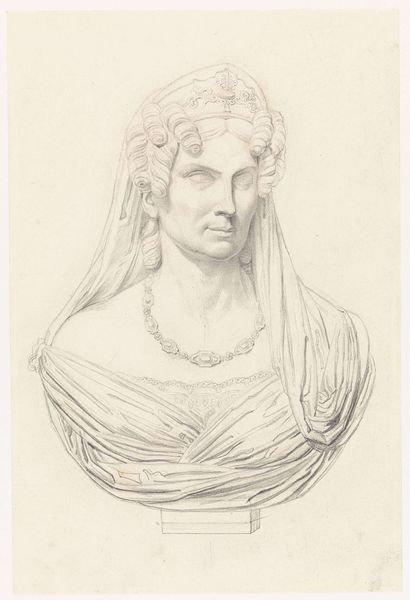
Academiestudie naar een gips van een antiek beeld: bacchant 1819 - 1881
0:00
0:00
johannestavenraat
Rijksmuseum
drawing, paper, pencil
#
pencil drawn
#
drawing
#
paper
#
pencil drawing
#
classicism
#
pencil
#
portrait drawing
#
academic-art
Dimensions: height 460 mm, width 295 mm
Copyright: Rijks Museum: Open Domain
Curator: Johannes Tavenraat created this pencil drawing sometime between 1819 and 1881. It's called "Academiestudie naar een gips van een antiek beeld: bacchant," which translates to "Academic Study of a Plaster Cast of an Antique Statue: Bacchante." Editor: My first impression? It’s strikingly serene for a Bacchante. There’s such delicate modeling in the face, an almost melancholic repose, rendered so exquisitely in pencil on paper. The subtle tonal gradations, particularly around the eyes and mouth, capture the smoothness of the plaster it replicates. Curator: Precisely. It speaks to the artistic pedagogy of the 19th century. Artists honed their skills by meticulously copying classical sculptures like this one, idealizing ancient aesthetics but sanitizing the Dionysian revelry typically associated with Bacchantes, for instance. Editor: Sanitizing—that's a perfect descriptor! It highlights how even a study, purportedly objective, is mediated by the artist’s own sensibilities and the prevailing academic standards. Note how Tavenraat emphasizes the contrapposto of the face and that soft modeling...it creates an exquisite tension between movement and stasis. Curator: Right. There's a tension, too, between the perceived value of original artworks versus copies. Plaster casts made classical art more accessible, facilitating its widespread study and, therefore, influence across Europe's artistic academies. These casts democratized art education while upholding classical ideals. Editor: Democratization, yes, but also a kind of distancing. Removed from its original context and material, presented in monochrome, this Bacchante becomes a vehicle for technical display—an exercise in form and light. It is very impressive in its own way. Curator: And it reflects a period where art served civic functions, teaching good taste and propagating national identity. The popularity of such subjects served an art market eager to capitalize on cultural authority through history and classicism. Editor: A lovely, revealing object—one that speaks volumes about the confluence of classicism and academic discipline. The study’s technical refinement transcends its source. Curator: Yes, its careful lines help us explore shifting cultural values concerning art’s purpose during the 19th century. A seemingly simple drawing becomes rich in its many implications.
Comments
No comments
Be the first to comment and join the conversation on the ultimate creative platform.

